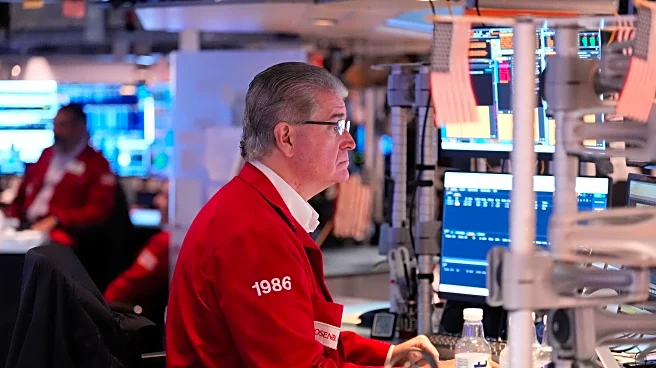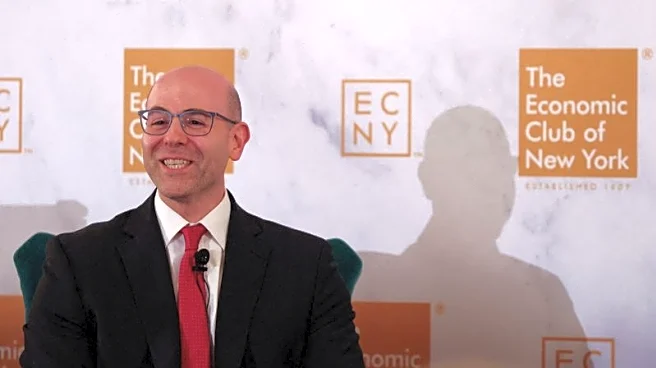What's Happening?
President Trump has signed legislation to reopen the federal government, ending the longest shutdown in U.S. history. This development removes the economic drag caused by over 1 million federal workers
going without pay and allows federal agencies to release vital economic data once again. Historically, the end of a shutdown has supported stock market growth, with the S&P 500 typically rising more in the one- and three-month periods following a budget resolution. Despite this, tech stocks led major indexes lower, with the Nasdaq finishing down more than 2% as investors shifted focus to concerns about an AI bubble.
Why It's Important?
The reopening of the government is significant as it alleviates economic pressure and restores the flow of crucial economic data. This could potentially stabilize markets and improve investor confidence. However, concerns about an AI bubble and fading expectations for a December rate cut are influencing market sentiment. The AI sector's rapid growth and high valuations are causing skepticism among investors, which could lead to a correction if expectations are not met. The Federal Reserve's upcoming policy meeting and the delayed economic data due to the shutdown add uncertainty to the market outlook.
What's Next?
Investors will be closely monitoring economic data releases and the Federal Reserve's policy meeting next month. The shutdown has delayed inflation and labor market reports, which are crucial for assessing the economy's health. The White House has indicated that some data may not be released, complicating the Fed's decision-making process regarding interest rate cuts. The market will also watch for developments in the AI sector, as concerns about a bubble could impact tech stock valuations.
Beyond the Headlines
The reopening of the government highlights the political dynamics affecting economic policy and market stability. The shutdown's resolution may lead to renewed discussions on government spending and fiscal policy. Additionally, the AI bubble debate underscores the challenges of balancing innovation with sustainable growth, raising questions about the long-term impact of technology investments on the economy.













